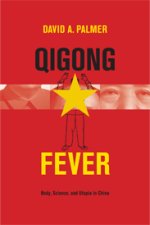Excerpted from Qigong Fever: Body, Science, and Utopia in China by David A. Palmer
There were no officially sanctioned qigong activities in China until its rehabilitation in 1978, after the end of the Cultural Revolution. However, one woman, Guo Lin, an artist and cancer victim from Guangdong province who had cured herself by practicing qigong during the 1960s, was brave enough to teach other cancer patients in the parks of Beijing as early as 1970. Her ‘New Qigong Therapy’ inaugurated a new, collective form of qigong teaching and practice that would later be adopted by most qigong masters. Guo Lin can thus be said to have triggered the qigong wave of the 1980s.
Born near Zhongshan, Guangdong in 1909, Guo Lin was trained as a young girl in traditional body technologies by her paternal grandfather, a Taoist in Macau, where her family had fled following the 1911 revolution. Later, as a student of landscape painting, she visited several holy mountains; the breathing technique she used when climbing the steep slopes would become the basis for her future qigong method.
In 1949 Guo Lin was hit by uterine cancer, which was treated by hysterectomy. The cancer recurred in 1959 while she was teaching at the new Beijing Painting Academy. Guo Lin remembered the techniques that she had learned in her youth, and decided to practice them to treat her cancer.

